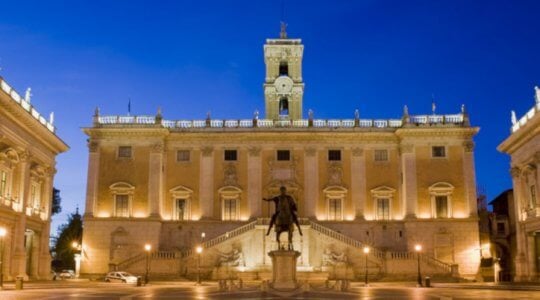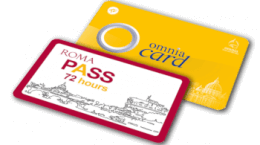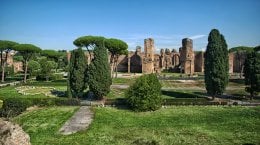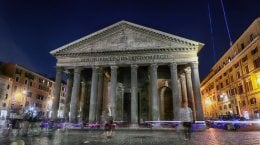Official Reseller Rome and Vatican – Jubilee 2025
Capitoline Museums
Among the main museums of the city of Rome it is impossible not to mention the Capitoline Museums. Much more than a simple cultural reference, but a real historical and artistic archive for humanity where there are a series of works of great importance at international level.

Among the main museums of the city of Rome it is impossible not to mention the Capitoline Museums. Much more than a simple cultural reference, but a real historical and artistic archive for humanity where there are a series of works of great importance at international level.
They are located in Piazza del Campidoglio, one of the most beautiful places in Rome and has a particularly picturesque view of the city.
They are easy to reach also because they are optimally connected with means of public transport: taxis can be a valid alternative, available by calling 060609. Those who like to walk, perhaps taking advantage of a nice sunny day, could opt for the metro. The closest stop to the Capitoline Museums is definitely Colosseum Metro Station, just 15 minutes on foot from your destination. The view during the walk will allow you to admire Rome in all its splendor and, above all, its most famous historical and architectural remains.
The Capitoline Museums are a recommended experience for any tourist who is in Rome on holiday. They are located in one of the historic buildings of Piazza del Campidoglio and constitute one of the main museum attractions of the entire Capital. It is important to remember that the protection of the museum is the responsibility of the municipality of Rome, which therefore takes care of the management of the museums in order to guarantee a certain continuity. The predominant feature of the Capitoline Museums is to house various pictorial works and sculptures that were donated in more or less ancient times by the Popes who succeeded one another in the Vatican. We therefore understand the inestimable value, not only economic, but also historical, of all very precious monuments that are worth admiring in these museums. We must not forget that you can see ancient findings that date back to the most ancient eras of the city of Rome in here, which were found and therefore kept in the Capitoline Museums after various excavation operations.
The same museums were opened to the public in 1734 at the behest of Pope Clement XII who gave great prestige to the city of Rome, wanting to show some of its most characteristic historical points, starting from the ancient works. History has it that the Capitoline Museums are still considered the first originated by man museum in the world: this is understood as a place of culture that is accessible to all and not only to the owners of the buildings that housed them. This is why the Capitoline Museums have marked an authentic furrow in history that certainly cannot be overlooked. Moreover, unlike many other museums that can be found in the city of Rome, in this case we refer to the plural as if it were a single point to be seen. This is because the first version only included the collection of majestic sculptures that were commissioned by Clement XII. Later, the Pinacoteca di Benedetto XIV (XVII century) was also added, which included illustrations that were specifically related to predominantly Roman characters.
As for the most famous work preserved in the Capitoline Museums, it is impossible not to mention the equestrian statue of Marcus Aurelius. A copy is visible in the center of the square, before entering the museums: the original instead, recently restored, is kept in a room adjacent to the Roman Garden, behind Palazzo dei Conservatori. This last building is the historical one of the first part of the Capitoline Museums and it is visible as soon as the tour begins. Then, you can move to the nearby Palazzo Nuovo, which is located in Piazza del Campidoglio. The particularly striking feature is that you go from one building to another during the tour, through a subway that passes through the square very precisely.
The New Palace houses the Pinacoteca that is still the subject of numerous studies, which is no small feat considering that there are famous works by painters like Caravaggio, just to name one.
Other works that can be admired at the Capitoline Museums are the Capitoline Wolf or even the colossal head of Constantine I. The first is the true icon of the city of Rome, with the she-wolf suckling Romulus and Remus. According to some historical references, it seems that the original version did not include the figures of the two children who were added later, following restoration work.
Among the major points of interest of the Capitoline Museums we can also mention Galleria Lapidaria, which is one of the main epigraphic collections in the world. It was created in an area where there was a very ancient road surrounded by buildings. Some remains of this historic street are inserted in the path that is made to discover the works in these museums. Nearby there is also the Tabularium, where there are the remains of the Roman Forum and those of the Temple of Veiove. These are two crucial points of the Capitoline Museums tour, fundamental not only for the ancient history of the city, but also for the exceptional artistic and cultural heritage present in them.
Check the stops of the Open Top Bus Vatican & Rome on the map in order to find the closest stop to the attraction you are interested in visiting;
Alternatively, consult https://www.google.com/maps for information on public transport.
Remember: with Omnia 72h you have access to all means of public transport of Rome.
Teatro Marcello



